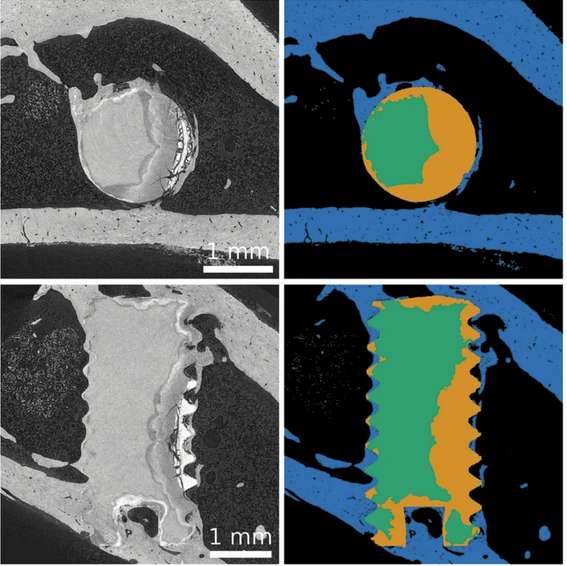Synchrotron-radiation microtomography (SRµCT)
X-ray microtomography
In radiography, X-ray microtomography uses X-rays to create cross-sections of a physical object that can be used to recreate a virtual model (3D model) without destroying the original object. It is similar to tomography and X-ray computed tomography. The prefix micro- (symbol: μ) is used to indicate that the pixel sizes of the cross-sections are in the micrometre range. These pixel sizes have also resulted in creation of its synonyms high-resolution X-ray tomography, micro-computed tomography (micro-CT or μCT), and similar terms. Sometimes the terms high-resolution computed tomography (HRCT) and micro-CT are differentiated, but in other cases the term high-resolution micro-CT is used. Virtually all tomography today is computed tomography. Micro-CT has applications both in medical imaging and in industrial computed tomography. In general, there are two types of scanner setups. In one setup, the X-ray source and detector are typically stationary during the scan while the sample/animal rotates. The second setup, much more like a clinical CT scanner, is gantry based where the animal/specimen is stationary in space while the X-ray tube and detector rotate around. These scanners are typically used for small animals (in vivo scanners), biomedical samples, foods, microfossils, and other studies for which minute detail is desired. The first X-ray microtomography system was conceived and built by Jim Elliott in the early 1980s. The first published X-ray microtomographic images were reconstructed slices of a small tropical snail, with pixel size about 50 micrometers.
Read more about 'X-ray microtomography' at: WikipediaWikipedia contributors. "X-ray microtomography." Wikipedia, The Free Encyclopedia. Wikipedia, The Free Encyclopedia, Dec. 4, 2025.
Publications
Micro-CT at the imaging beamline P05 at PETRA III
Wilde F, Ogurreck M, Greving I, Hammel J, Beckmann F, Hipp A, Lottermoser L, Khokhriakov I, Lytaev P, Dose T, Burmester H, Müller M, Schreyer A - AIP Conference Proceedings - 2016
